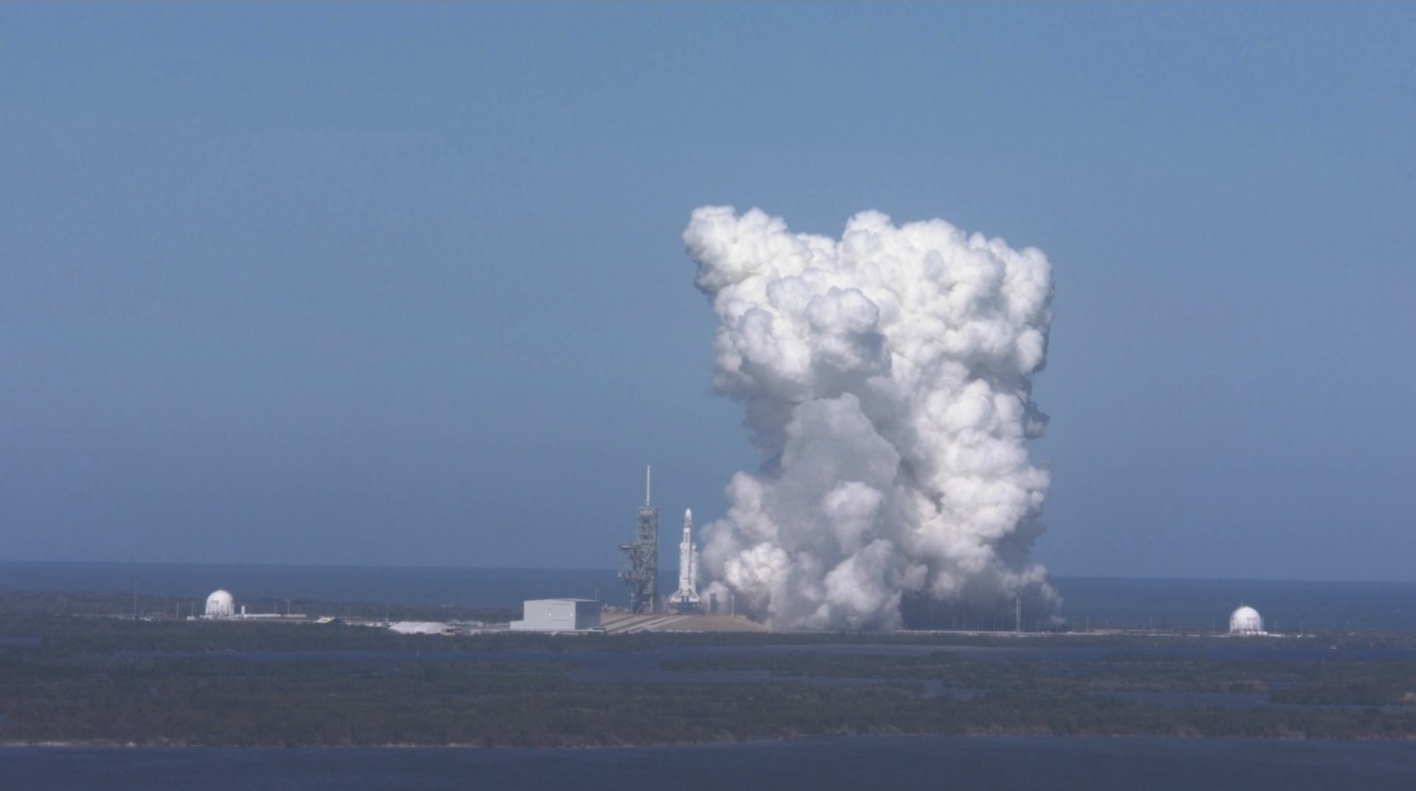The world's largest operational rocket is edging closer to lift-off, with SpaceX successfully firing up its Falcon Heavy rocket for the first time. This morning's static fire test is a vital stepping stone to its upcoming maiden launch, and according to CEO Elon Musk, it went off without a hitch.
If all goes to plan, in early February the Falcon Heavy will become the most powerful rocket to take flight since the Saturn V rocket lifted off as part of the Apollo missions to the Moon in the 60s and 70s. It is the evolution of SpaceX's Falcon 9 rocket and is essentially three of those cores strapped together, meaning a total of 27 engines generate a maximum thrust of 5.1 million pounds, equal to eighteen 747s.
These engines were brought to life for the first time at Cape Canaveral this morning in what is known as a static fire test. This is part of routine launch preparations and sees the engines fired up while the vehicle is pinned to the launchpad with tethers.
These haven't always gone so smoothly for SpaceX, with a static fire test of a Falcon 9 rocket in September 2016 leading to a launchpad explosion and the loss of a multi-million dollar satellite. There were no such problems with this morning's test, however, with Musk confirming on Twitter that things went a little more smoothly.

"Falcon Heavy hold-down firing this morning was good," the CEO tweeted. "Generated quite a thunderhead of steam. Launching in a week or so."
That launch could go either way. Musk has previously said that if the rocket simply makes it far enough after launching to avoid damage to the pad, he would consider that a win. The likelihood of explosions didn't stop the entrepreneur from loading his own midnight cherry red Tesla Roadster into the nosecone as a test payload. You know, just in case he didn't have enough to lose already.
SpaceX shared the following video on Twitter this morning, showing the static fire test in action.










